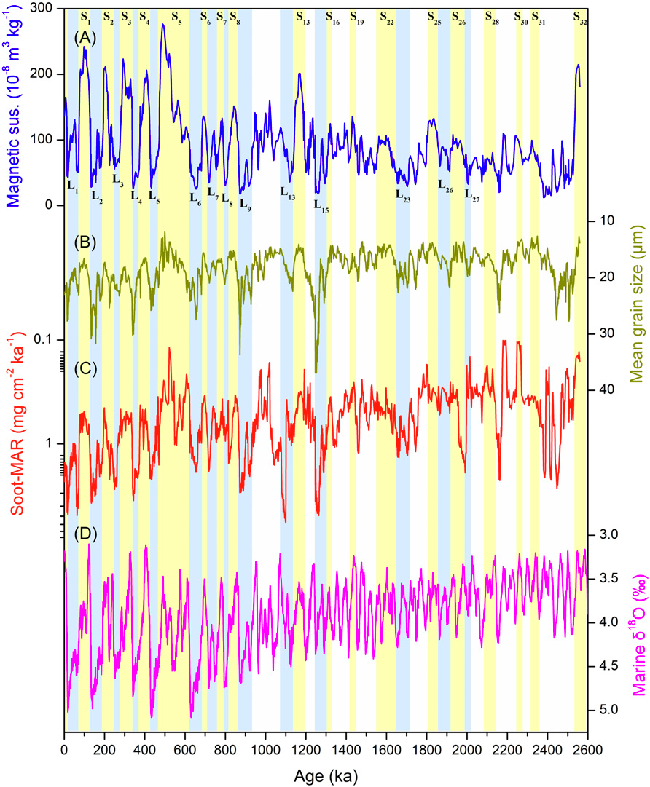Wildfire, a natural phenomenon, existed on the Earth over 400 Ma. However, the mechanisms underlying wildfire-climate interactions are not clear. Wildfire forcing has long been underestimated or overlooked in climate change studies.
A study led by AN Zhisheng from the Institute of Earth Environment (IEE) of the Chinese Academy of Sciences revealed a linkage between glacial cycles and inland Asian high-intensity wildfire events by analyzing high-resolution soot deposition over the last 2.6 million years. The study was published online in PNAS on Feb. 24.
As ice ages have come and gone during the Quaternary period, mountain glaciers on the central Asian plateau have grown and shrunk with climate oscillations.
To determine how the dry glacial periods and wetter interglacial periods affected wildfire events, the researchers reconstructed a unique soot record to reflect regional-to-continental high intensity fires for the central Asian plateau by measuring soot and char particles in more than 1300 loess (wind-blown silt) sediment samples.
They measured black carbon in the loess sediment and distinguished soot (submicron-sized particles that are produced under fast-burning, high intensity conditions) from char (larger particles that are produced by lower intensity, smoldering combustion), which made it possible to investigate specific relationships among the types of fires and climate variables.
This record is the first to show clear glacial-interglacial cycles of wildfire. The results revealed that high intensity fires were associated with drier glacial periods when dust loads in the atmosphere were high and the ice-volume modulated aridification affected wildfire occurrences in the Quaternary climate system.
"Wildfires could act as a source of soluble iron that fertilized the oceans, promoting the drawdown of atmospheric carbon dioxide," said Dr. HAN Yongming, first author of the paper. "These results suggest possible connections between fires, dust, and climate through the iron cycle and potential effects of wildfire on the global climate system."
Recognition of the impact of wildfires on the iron cycle could help us understand climate change not only over orbital glacial-interglacial cycles but also over longer geological timescales and in the future as well.

Fig. 1. Quaternary high-intensity fires indicated by soot-MARs reconstructed from the Luochuan section of the CLP compared with other climatic parameters. (A) MS from Luochuan, an indicator of precipitation on the CLP (19); (B) MGS from Luochuan, an indicator of wind strength and the aridity of the dust source area (26); (C) Soot-MAR from Luochuan, indicating high-intensity fires; (D) marine benthic oxygen stable isotopes, an indicator of ice volume (22). The yellow shaded areas indicate paleosol (S) layers, corresponding to interglacial periods, while the light blue shaded areas indicate loess (L) layers, corresponding to glacial periods. Below L9, not all layers reflecting glacial–interglacial cycles are shown with different colors; this was done to highlight only the main patterns in the cycles. Note: the scales for the MGS, soot-MAR, and marine δ18O are reversed.(Image by HAN, et al.)
Contact: Bai Jie, Institute of Earth Environment, Chinese Academy of Sciences, Xi'an, China. Email: baijie@ieecas.cn
 © 2015 Institute of Earth Environment,CAS
© 2015 Institute of Earth Environment,CAS Address:No. 97 Yanxiang Road, Xi'an 710061, Shaanxi, China

 Location :
Location :